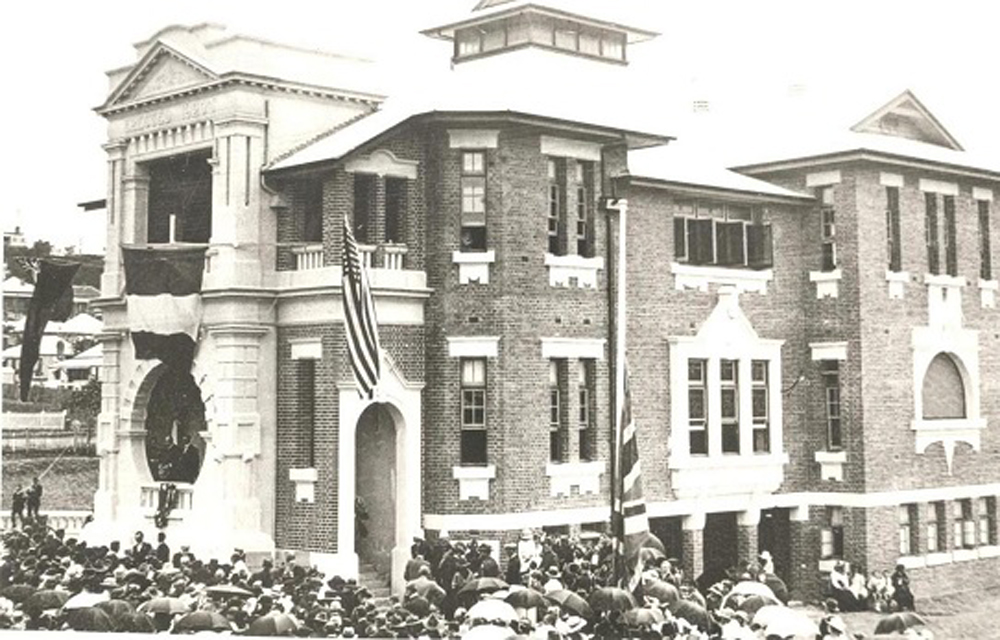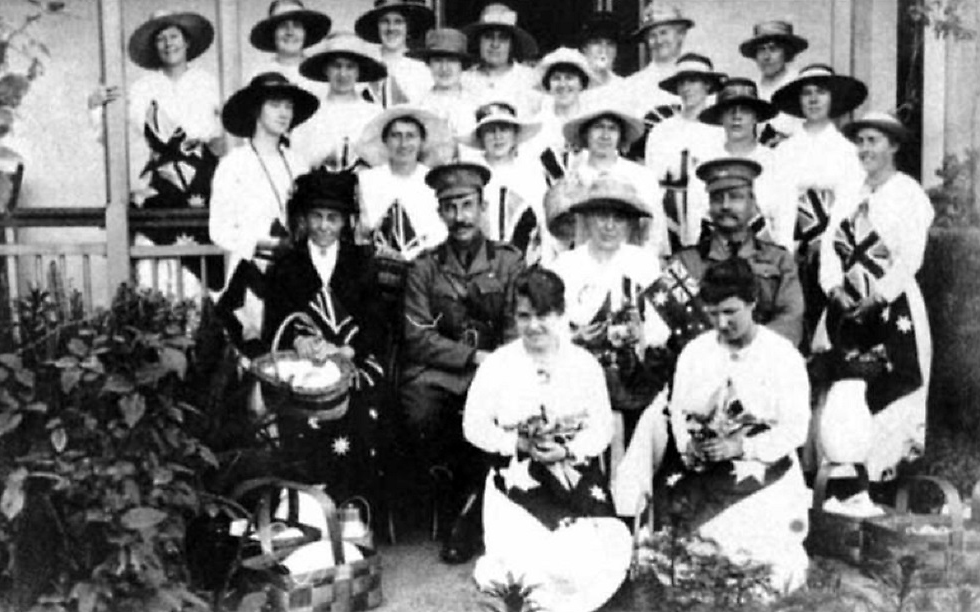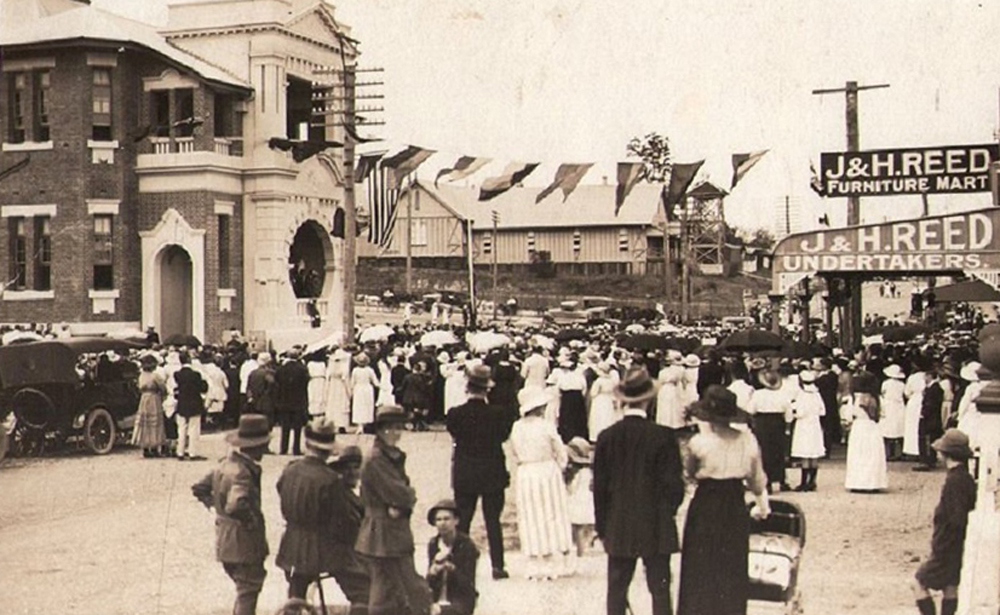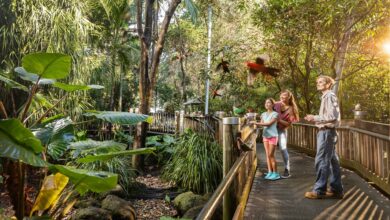The Ipswich Soldiers Memorial Hall was opened in front of a huge crowd, exactly four years after the guns fell silent in the ‘war to end all wars’.
The heritage Edwardian Baroque building, designed by prolific Ipswich architect George Brockwell Gill, still stands today as it did the day it was unveiled 100 years ago on 26 November 1921.

This Saturday the Ipswich community will come together again as Queensland Governor Her Excellency the Hon Dr Jeannette Young PSM unveils a plaque in honour of those who fought in WWI and for all of those who have served since.
The Ipswich City Council of the day contributed to half the funds to build the hall with the rest coming from the local community.
Funds were raised by public subscriptions, minting and selling badges engraved with ‘Returned Soldiers Building Fund’, dances in the Town Hall, concert parties and travelling tent shows in Devil’s Gully held by Birch, Carrol and Coyle.
Perhaps the most notable fundraising efforts were performed by the Ipswich Train Tea ladies.
The Ipswich Train Tea Society was established by the women of Ipswich in the early 1900s and enabled those at home to contribute to the war effort.
At all hours of the night or day, these dedicated residents would meet trains travelling through Ipswich to provide tea and refreshments to the soldiers heading off to the western front as well as returned servicemen and women.
According to a The Queensland Times article from November 1922, it was estimated that between 30,000 and 40,000 soldiers passed through Ipswich.
A plaque will be unveiled by Queensland Governor Her Excellency the Hon Dr Jeannette Young PSM on Saturday 27 November and the Ipswich RSL Sub Branch invites the Ipswich community to attend.
Where: Ipswich Soldier’s Memorial Hall, 63 Nicholas Street, Ipswich
When: Saturday, 27 November 2021 at 11am
The president of the society was Elizabeth (Eliza) Cameron. A large number of scones, biscuits and cakes were baked at her home. She was assisted by secretary Claire Berge.
RSL museum curator Mick Corkery said it was Mrs Cameron who was the driving force behind establishing the Soldiers Memorial Hall.
Walking past this beautiful Ipswich Central building today, many might associate it with imagery of men fighting for their country and giving their lives.

The ladies of the train tea society taken on the verandah of Mrs Cameron’s house
Most probably don’t associate it with a group of women and their determination to pay respects to those who served.
“In about 1916, Mrs Cameron got her troops together and started raising funds to build this building. She and the school children would have fetes and picnics to raise the money, then the Ipswich City Council threw in the rest,” Mr Corkery said.
“On the day they opened, they were short a few thousand pounds, so they grabbed a flag and walked around the streets here and managed to raise the rest of the money to make the final payment.”
The building is still used to cater for returned or current serving Defence members.
Ipswich RSL Sub Branch operates a museum at Memorial Hall, open on the last Sunday of the month (except December) from 9am to 3pm. The last session for the year is this Sunday, 28 November 2021.
Admission is free. For more information email [email protected]
History of the Ipswich Soldiers Memorial Hall
During World War One a number of memorials were erected to perpetuate the memory of those who had gone to fight.
After the signing of the Armistice however, the citizens of Ipswich decided a more significant memorial was required. It was finally agreed that the most suitable would be a Soldiers Memorial Hall.
In 1920, with the permission and assistance of the then Minister of Lands, it was decided to erect a hall on a portion of the area known as the Central Gardens, or more commonly the Pump Yard as it was here that the first pump for public water supply was located.
Plans for this hall were drawn up by architect George Brockwell Gill. It was a two-storey design plus a basement.
The first floor was to house the city council’s library with the other two floors containing lounge rooms, a buffet, two billiards rooms and an assembly hall.
The cornerstone was laid by General Sir William Birdwood on the 4 May 1920. Work on the building started with builder F.J. Lye, brickwork by A. Mansfield, plaster by J. Jamieson, joinery by A. Foote plumbing, by J.M. Wallis and electrical work by W.J. Trattles. The cost of the building was in the vicinity 11,000 pounds.
On 26 November 1921 in a grand ceremony the hall was officially opened by the governor Sir Matthew Nathan.
A committee comprised of five returned soldiers and five council Aldermen, the Memorial Hall Committee was formed to administer the building.


